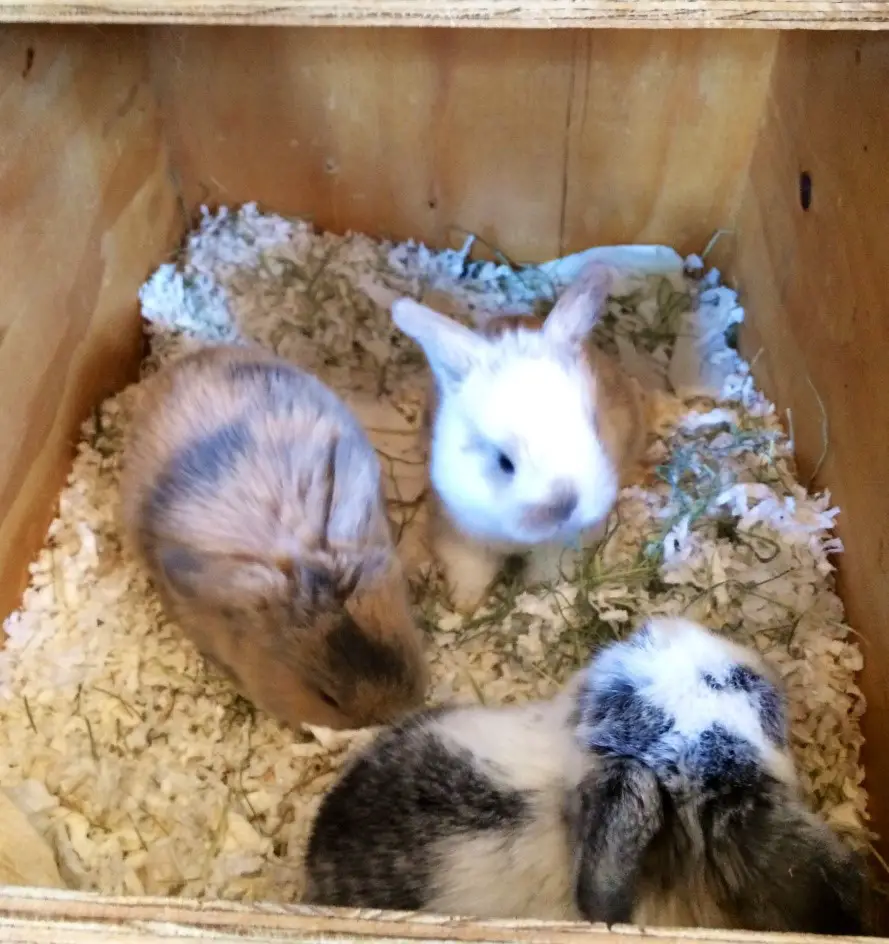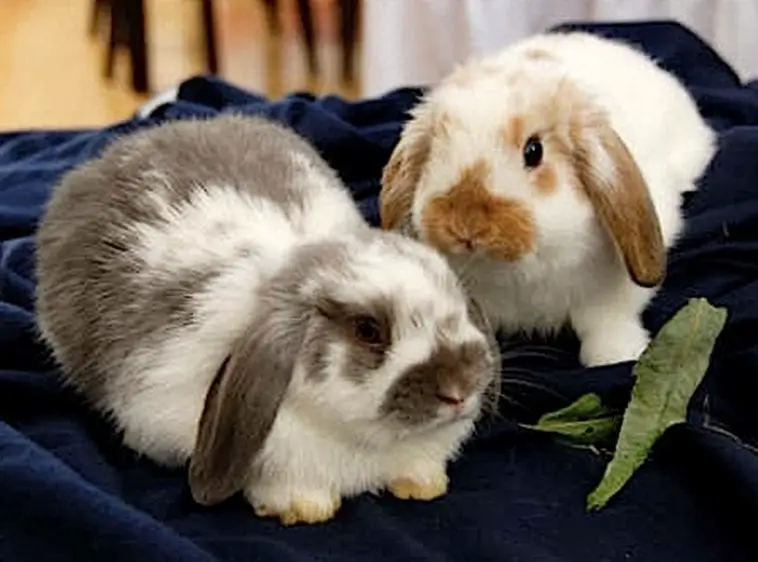Holland Lops are the perfect example of cuteness by simply taking a look in their floppy ears and tight size. These creatures are the small species of rabbit that only weigh around 3 to 4 pounds once they become completely grown. If you manage to learn the basics of taking care of Holland Lops, then there should be no way that your pet will feel sad and unhealthy during its stay in your home.
Guidelines in Taking Care of your Rabbit
Taking care of your Holland Lop may not that easy. However, anyone can refer to useful guidelines so that they can effectively raise their pet rabbit. Remember that raising a rabbit effectively does not only provide your pet with a happy and healthy life; it can also be an indication of your success in raising a Holland Lop.
Here are some useful guidelines on how to take care of your Holland Lop:
1. Securing your Holland Lop a Home
- Before you decide to get a Holland Lop, you should first secure a cage that will serve as its home. Find a rabbit cage that has a size of at least 1 square foot per pound of a completely developed rabbit. For this breed, you will require a minimum of a 4-foot square cage. These creatures are known to be very dynamic. Thus, you have to see to it that it has sufficient space where it can run around. The width of the cage should be at least 1 and ½ times the size of the completely grown rabbit. The length should be thrice the length of the rabbit.
- Choose a cage that has a solid flooring, rather than getting a wire floor. You should know by now that wire floors may create an injury to the feet of the rabbit plus the fact that the feet of the Holland Lop may also get stuck and be harmed. Put a wooden flooring or a piece of carpeting along the underneath portion of the cage.
You may also get a piece of fleece fabric since it will not leave lengthy strings in the rabbit’s digestive tract if it happens to eat it. You may also want to place a newspaper beneath the cage but just don’t consider utilizing the newspaper as rabbit bedding. Remember that you will have to put a layer of bedding above the floor to offer cushioning for the rabbit.
- Place bedding in the cage. Regardless of the floor in your cage being solid, you would still have to add bedding. The bedding will serve as the sleeping spot for your rabbit. Moreover, the bedding must be edible since Holland Lops will naturally gnaw it. Natural fiber blanket, timothy hay, and pelleted paper make ideal materials for the bedding.
- Determine whether you would like to set up the rabbit cage outdoors or indoors. Whatever your decision would be, there are good points to each of them. Holland Lops that are housed indoors commonly have a longer lifespan and are more social. Holland Lops in outdoors, on the other hand, are edgy, vulnerable to weather and temperature alterations, flies, predators, fleas, and other risks.
- Secure a litter box. Put a box inside the cage of the rabbit to serve as a litter box. For a Holland Lop in small size, you can use a plastic cat pan in average size. Nevertheless, it is ideal for getting a larger litter box. Put fresh hay within the litter box. You may also put rabbit-safe bedding underneath the hay.

- Create a hiding venue. Holland Lops are naturally fickle and want to conceal themselves from predators, extreme noises, or other factors that may threaten them. You have to secure some hiding spots for your pet rabbit.
2. Rabbit-proofing the Home
- You may wish to provide your Holland Lop, an indoor room. If you decide to keep your pet inside the home, you can assign one room where your rabbit shall be allowed to run around and explore. The room should have food dishes, a litter box, a water bowl, and a hay feeder. Put a mat beneath it to prevent it from dirt. Inside the assigned room, you can create rabbit cages, cardboard castles, puppy pens, or rabbit condos.
- Detach the electrical wiring or at least cover it. Holland Lops love to bite and there is a tendency that they will chew the wiring if you do not remove it. If you allow your rabbit to explore in a room, you have to secure your rabbit by either detaching or covering the electrical wirings. You may keep and secure the electrical cords with solid plastic tubing split lengthwise, having the cords wrapped inside.
- Secure the furniture from the bites of your rabbit. Holland Lops will bite on door edges, trim, and legs of the furniture. They may also bite carpet, sheetrock, and wallpaper. Put a board over any areas where your rabbit may like to gnaw.
- Keep away the things that should not be chewed by your rabbit. To help impede your Holland Lops from gnawing things it should not, you must secure a lot of things for it to chew. These may include cotton towels, alfalfa cubes, fresh branches, and grass hay.
3. Giving Food to the Rabbit

- Put a water dish inside the cage. You have the option to use either a ceramic dish or a sipper bottle. Although a sipper bottle is more manageable to clean, Holland Lops appear to like drinking water from ceramic dishes.
- Offer your Holland Lop hay. Your pet rabbit requires an appropriate quantity of fiber daily, together with moisture, to keep a hearty gut. If you fail to do so, expect your rabbit to experience illness and eventually die. One of the chief supports of your rabbit’s diet is a superior quality grass hay. Your rabbit must be given an unlimited supply of grass hay. See to it that you dispose of any wet or spoiled hay and only offer your pet fresh hay.
- Offer your Holland Lops pellets. Another fundamental ingredient in the diet of your rabbit is a commercial pellet for rabbits. This is ideal compared to seed mixes or grain because it is effectively formulated for a rabbit to supply all nutrients they require. If your Holland Lop has a grain or seed mix, it will only filter the portions it likes and leaves those that do not interest it, leaving an unbalanced diet.
- Offer your Holland Lops greens. Green and leafy vegetables are necessary to secure moisture and fiber to the diet. Ideal selections may compose all types of lettuce, excluding iceberg, which lacks nutrient, carrot tops, bok choy, dandelion greens, and broccoli leaves and stems. Limit your feeding to ½ to 1 cup of these ingredients daily.
- Offer your rabbit some treats. Rabbits may be given stuffy vegetables such as fresh fruit and carrot roots. However, these ingredients must be limited to a few tablespoons daily. Do not offer your Holland Lops other human foods, nor other grains. Stay with pellets, hay, and green and leafy vegetables as the main component of your rabbit’s diet.
4. Taking Care of the Health of the Rabbit
- Schedule the visit of your Holland Lop to a veterinarian. Many Holland Lops are physically fit as long as they are given the best kind of diet. Nevertheless, you must schedule a visit to a vet to have your pet rabbit checked. This examination should include a check-up of the teeth to ensure that the teeth are appropriately wearing. If the teeth are not wearing properly, the vet may have to trim them to prevent the teeth or the mouth from becoming injured.
- Neuter or spay your Holland Rabbit. If your Holland Lop is a male, then it should be neutered. If it is a female, it should be spayed. This prevents unwelcome litters if you own two rabbits of the opposite gender. It also stops unpleasant behavior, such as urine spraying or aggression. Neutering or spaying your rabbit will also reduce reproductive system infections and cancer.
- Be cautious with the indications of illness. Most of the time, rabbits that are given proper diets are in good physical condition. Nevertheless, it is important that you become aware of the common indications of illness such as diarrhea, not drinking or eating, reddened skin, nasal or eye discharge, fur loss, swellings, not pooping, drooling, abnormal activity, fever, or red urine. If you notice any of these indications, it would be best if you immediately consult a veterinarian to be given proper medication.
Conclusion
Raising a Holland Lop comes with a responsibility. Some may get a rabbit out of the fun. However, they should never forget that they also owe these cute creatures the proper handling and care. These creatures appreciate the affection given to them by their owners; thus, in return, show your owners their love and friendliness.
Above are the basic guidelines on how to take care of your Holland Lop. It does not really require an expert to effectively raise this kind of breed. It only needs a sincere heart and dedication to treat these cute creatures properly.


